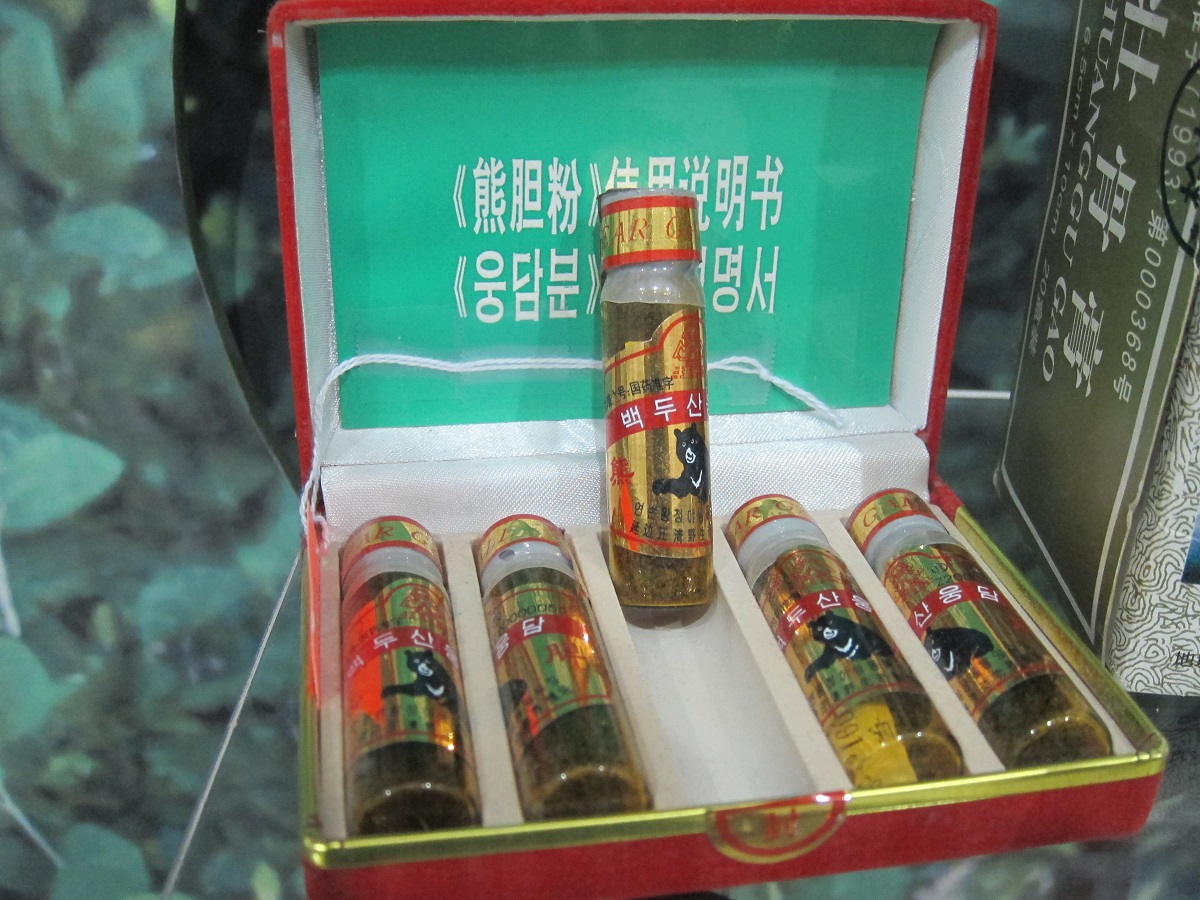IUCN SSC, Oxford University and Sun Yat-sen University led the markets side of the work, with the collaboration of the Academy of Inventory and Planning, NFGA and CATCM. From a research perspective, the complexity of bear markets in China made the work challenging, intriguing and unique. Farmed, wild and synthetic bear bile are all medically effective, but people have varying views on their efficacy and substitutability. The wild product is often considered (but not proven) to be most potent. However, it is expensive, illegal and hard to obtain, whereas farmed bile is relatively cheap and sold legally over the counter in pharmacies in China, as packaged products that are highly regulated. Synthetic UDCA is relatively expensive and sold as packaged products such as tablets.
We began by identifying the major data gaps, which included a lack of recent information on the scale of bear bile consumption in China and data from consumers themselves about what influenced their decisions. We conducted surveys with members of the public and interviews with medical practitioners in four very different Chinese provinces: Jilin, Guangdong, Guangxi and Sichuan. The surveys and interviews aimed to assess the prevalence of consumption, prescription and sale of bear bile products. We then surveyed more than 1,400 consumers of traditional Chinese medicine to investigate what influenced switching between wild, farmed and synthetic products.
Our studies demonstrated that bear bile consumption in China is influenced by complex factors and that characterising all consumers as having the same preferences and behaviours is too simplistic.
Our survey of the public used a specialised questioning technique to overcome people’s reluctance to admit to using bile, even farmed bile, due to confusion about its legality and the stigma associated with highly-publicised animal welfare concerns. Whereas less than 4% of respondents directly admitted to using bear bile products, we estimate an actual use of over 11%. Some groups of people, particularly women and younger people, were less forthright than others in admitting to using bile products. We were unable to estimate the actual use of wild bile, as too few people in our sample (0.4%) reported consuming it. Around a quarter of the traditional medicine doctors interviewed had prescribed bile, while half of pharmacy workers interviewed had suggested it to a customer; indicating that demand still exists and that it is in part sustained by the advice of medical practitioners.
In our consumer survey we uncovered evidence of distinct groups of people having similar preferences that could underpin whether they switch from or to wild bile in various medical situations. These included one group who preferred only legal farmed and synthetic bile products and would be unlikely to use wild bile, another group who disliked synthetic products but would use either farmed or wild bile, and a final group who would prefer to use an alternative to bear bile where possible. Notably, a worsening illness promoted switching between products in all groups, but not in a consistent direction.
Overall, our studies demonstrated that bear bile consumption in China is influenced by complex factors, with the choice to consume wild, farmed or synthetic products influenced by advice from doctors or family members, individual preferences, knowledge or prior experiences with the product. Some findings came as a surprise. For example, factors such as price and availability play a key role in choices that consumers make, meaning that many consumers with an overall preference for wild bile may only consume legal farmed or synthetic products.













Ajouter un commentaire